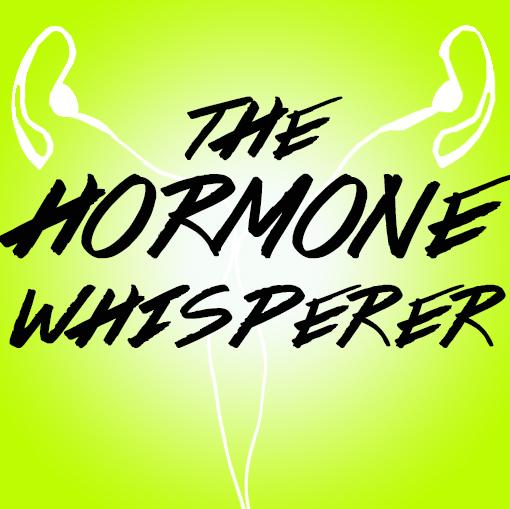Reposted from: https://www.yahoo.com/health/do-men-have-pms-117260972342.html
Written by: Alisa Vitti

THE QUESTION: My man gets moody. Is it possible for him to have a form of PMS?
THE ANSWER: Do men have PMS? You bet your ovaries they do! While women have a 28-day cycle, men have a 24-hour cycle that governs their hormonal experience. But what does this mean practically?
Women have one time during the month where they are vulnerable to PMS. Men have one time every day where they are vulnerable to a mood swing!
Men are actually more moody than women — even though women get culturally pegged as the moody ones. In fact, more often than not, our “relationship” issues are really just hormonal imbalances that we are not aware of or dealing with properly!
I remember one time my husband came home from a boys’ night out. He shared with me that somehow he and his friends got on the subject of their respective partners’ PMS. Every guy shared how he felt like he didn’t know how to deal with it. But when it came to my husband’s turn, he said, “Dudes — my wife doesn’t have PMS.” Pause for jaws hitting table in disbelief. Of course they didn’t believe him, but he shared how it was and they were all excited to get my book for themselves to learn all about it.
I’ll share the secret of my marriage: My husband and I keep track of each other’s hormonal patterns. My hubby keeps track of where I am in my cycle — every week, so that he knows how to successfully navigate my predictable hormonal patterns — and this guides him on when to take me out, cook with me at home, do something active, have important conversations, and of course what kind of foreplay to bring to the bedroom. My hormonal patterns always set him up for success in our marriage. And of course, just like he keeps my patterns in mind, I keep his in mind, too! I know exactly when his ideal time is for me to discuss important things, get us moving and having fun, tackle domestic projects, give him alone time, and, of course, initiate sex.
In fact, men begin the slow journey of andropause (or male menopause) at 25, (women begin the slow journey of perimenopause at 35, for comparison). But what’s andropause? It’s the slow decrease in production of testosterone and unchecked men, just like women, can become estrogen-dominant. What does that look like on a dude?
Belly fat, hair loss, oily skin, back acne, gas and bloating, fatigue, low libido, and — you got it — mood swings. This can happen slowly over time, but it also can happen every single day. However, for men, we shouldn’t call it PMS because men are not premenstrual. Instead, I propose we call it LACS: Low Androgen Cortisol Syndrome. Basically, man-PMS.
Related: The Nutrient Deficiency That No One Has Heard Of, But Almost Everyone Has
If your guy has become a cranky-pants party-pooper, here’s a little guidance on what’s going on with him.
The FLO Science: The Time of Day Men Experience LACS (Their Version Of PMS)
Here’s how it works in a guy’s hormonal pattern: He is driven by cortisol, insulin, testosterone, estrogen, and thyroid hormones. A hormonally balanced male will have a surge of cortisol and testosterone in the early morning (ahem, this is where morning wood comes from!), another surge of both around noon, then a little dose of both around 3 p.m., and then an even smaller dose in the early evening.
(A big “by the way” here, guys: You know how you’re tired at night, as in, too tired really to have sex? That’s normal — you are supposed to be tired! The ideal time of day for you to have sex is when your testosterone is surging — so morning time for workouts and “workin’ it out” is the way to go. Go with your FLO, too!)
When cortisol and testosterone are functioning optimally in the above pattern, then estrogen and insulin levels are kept in check properly throughout the day. So in the normal course of a 24-hour period, men will be at their brightest, most energized, and most communicative before 3 p.m. Then, from 3 to 9 p.m., they will start to feel more inward, processing things internally, be less interested in conversation, and less interested in exercise and sex. This is the LACS window. (Usually, you shouldn’t notice this — the window shouldn’t be a symptomatic period of time for you. But if your hormones, diet, and lifestyle are off, then there may be symptoms.) From 9 p.m. on, hormones are guiding men to sleep, and for good reason: The earlier men get to bed, the more testosterone they produce for the next day. That’s important, because the more testosterone a man produces while he sleeps, the less susceptible to LACS he’ll be the next day.
If a man is chronically up late, eating late, exercising after work, and pounding caffeine — basically doing anything that throws off his ideal hormonal pattern — then he’s going to start making less testosterone, his cortisol levels will be insufficient, estrogen levels will start to rise, and he’s going to start to come home in a really bad mood and turn into a couch potato rather quickly. This 3-to-9 p.m. window of time will become much more symptomatic for him as his PMS gets worse from his unaddressed hormone imbalance. This can lead to what seems like problems in the relationship, since he’ll be harder to communicate with, less available to do things with you physically, too tired to take care of himself, and too tired for sex. It’s not your relationship, it’s his hormones!
Remember also that men can experience thyroid disorders — and with little screening offered and infrequent doctor visits, men can go for quite a while with an underactive thyroid and be exhausted and bummed out for long stretches of time.
Related: Why Don’t I Feel Recharged After I Sleep?
Everyone’s mood is affected by their hormones, so some fluctuation for us all is normal and to be expected. A man will be brighter and more social before 3 p.m., and he will be more internally processing after 3 p.m. — just like a woman is the first half of the month versus the second half of her cycle. It’s normal for both men and women, and should be acknowledged and worked with. But if a man’s mood swings are really extreme and there’s a Jekyll-and-Hyde-like quality to them, then it’s likely due to too much estrogen and too little testosterone.
A great way to evaluate how much of a PMS problem a man really has is to evaluate where he is on the spectrum in these five areas:
- How easy it is for him to wake up and get going in the morning — it could be indicative of low cortisol.
- How much snacking/coffee-drinking he does in the afternoon — it could be indicative of elevated insulin.
- How irritable he is when he comes home — it could be indicative of high estrogen.
- How often he initiates working out and sex — it could be indicative of low testosterone.
- How tired he seems — it could be indicative of a sluggish thyroid.
His answers to these can provide guidance to why his moods might be all over the place. More importantly, it will provide a path so he can feel like himself again!
The FLO Fix
Men can get their estrogen levels under control — my 4-Day Detox is a good place to start, and I’ve also found these strategies can help:
- Take ashwagandha and a B-100 complex vitamin, to boost energy.
- Trade out your afternoon coffee and sweets, and instead opt for something like baked sweet potato fries with coconut oil and cinnamon.
- Add a half-cup of cooked kale to your lunch for its effects on estrogen.
- Take the Tribulus herb, which stimulates luteinizing hormone in the pituitary gland for men, increasing production of testosterone.
- Take iodine and L-Tyrosine to support the thyroid.
Also check out my “Feel Sexier, Love Better” audio session, which has tips for syncing you and your partner’s hormones for better sex. (You’ll hear from my hubby, too!)
For me and my man, we like to hack our hormones for optimal fitness inside and out — and also to nurture the romance and intimacy in our relationship. And you can do it, too, now that you know the science of your optimal hormonal “FLO.” Once you have the right information about how your body really works, you can start making health choices that finally start to work for you. You can do it — the science of your body is on your side!
Good things come in threes: I want to hear from you in the comments!
First, does your man have PMS? Are you a man with PMS? What are your symptoms?
Second, what are your top health questions for me, your trusty Hormone Whisperer? Your question could be featured in my column!
Third, everyone you know is hormonal: Spread a little good ovary karma and share this article with your friends on social media.






















Get Connected